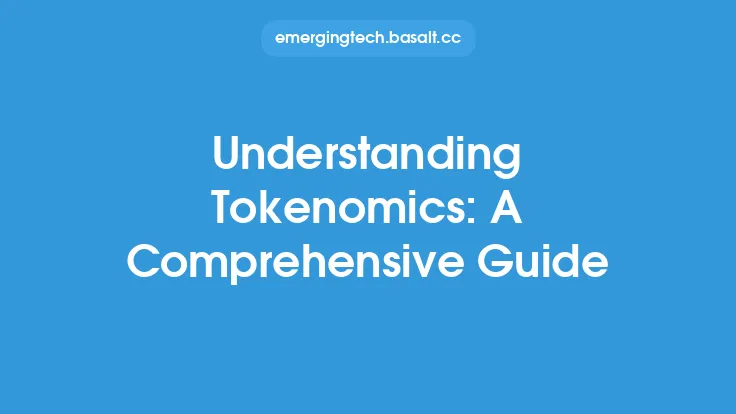In the realm of blockchain and cryptocurrency, the concept of token velocity plays a crucial role in determining the health and stability of a token economy. Token velocity refers to the rate at which tokens are spent or transferred within a given economy, and it has a direct impact on the overall value and usability of the token. A high token velocity indicates that tokens are being frequently used and circulated, which can lead to increased liquidity, higher transaction volumes, and a more robust economy. On the other hand, a low token velocity can be a sign of a stagnant economy, where tokens are being hoarded or not used for their intended purpose.
What is Token Velocity?
Token velocity is a measure of the number of times a token is spent or transferred within a given period. It is an important metric that can help token creators, investors, and users understand the dynamics of a token economy. Token velocity can be calculated using various methods, including the ratio of transaction volume to token supply, or the average number of times a token is spent or transferred within a given time frame. A high token velocity indicates that tokens are being frequently used and circulated, which can lead to increased liquidity, higher transaction volumes, and a more robust economy.
Factors Affecting Token Velocity
Several factors can affect token velocity, including the token's use case, user adoption, and the overall health of the economy. A token with a clear and compelling use case is more likely to have high token velocity, as users are more likely to use and transfer the token for its intended purpose. User adoption is also a critical factor, as a token with a large and active user base is more likely to have high token velocity. Additionally, the overall health of the economy, including factors such as inflation, interest rates, and market sentiment, can also impact token velocity.
Benefits of High Token Velocity
A high token velocity can have several benefits for a token economy, including increased liquidity, higher transaction volumes, and a more robust economy. When tokens are being frequently used and circulated, it can lead to increased demand and higher prices, which can attract more users and investors to the economy. High token velocity can also lead to increased network effects, where the value of the token increases as more users join the network. Furthermore, a high token velocity can help to reduce the risk of price manipulation, as a large and active user base can help to stabilize the price of the token.
Challenges of Low Token Velocity
On the other hand, a low token velocity can be a sign of a stagnant economy, where tokens are being hoarded or not used for their intended purpose. This can lead to reduced liquidity, lower transaction volumes, and a less robust economy. A low token velocity can also lead to reduced network effects, where the value of the token decreases as fewer users join the network. Additionally, a low token velocity can increase the risk of price manipulation, as a small and inactive user base can make it easier for malicious actors to manipulate the price of the token.
Strategies for Increasing Token Velocity
There are several strategies that token creators and users can use to increase token velocity, including incentivizing users to use and transfer the token, creating a clear and compelling use case, and building a large and active user base. Token creators can also use techniques such as token burning, where a portion of the token supply is removed from circulation, to help increase token velocity. Additionally, token creators can partner with other projects and businesses to increase the use case and adoption of the token, which can help to increase token velocity.
Measuring Token Velocity
Measuring token velocity can be a complex task, as it requires access to detailed transaction data and a deep understanding of the token economy. However, there are several metrics that can be used to estimate token velocity, including the ratio of transaction volume to token supply, or the average number of times a token is spent or transferred within a given time frame. Token creators and users can also use blockchain analytics tools to track transaction data and estimate token velocity. By monitoring token velocity, token creators and users can gain a deeper understanding of the token economy and make informed decisions about how to increase token velocity and improve the overall health of the economy.
Conclusion
In conclusion, token velocity is a critical metric that can help token creators, investors, and users understand the dynamics of a token economy. A high token velocity indicates that tokens are being frequently used and circulated, which can lead to increased liquidity, higher transaction volumes, and a more robust economy. By understanding the factors that affect token velocity, and using strategies to increase token velocity, token creators and users can help to build a healthy and stable token economy. As the blockchain and cryptocurrency space continues to evolve, the importance of token velocity will only continue to grow, and it is essential that token creators and users prioritize this metric in order to build a successful and sustainable token economy.





